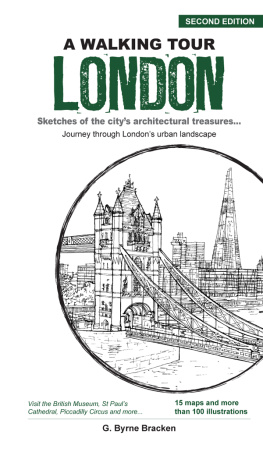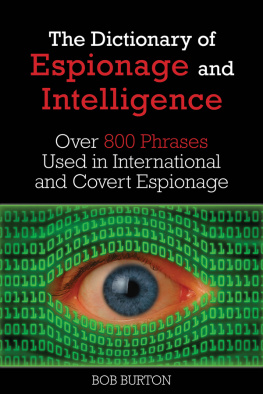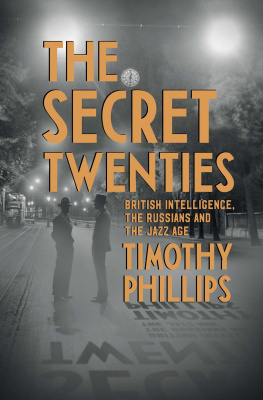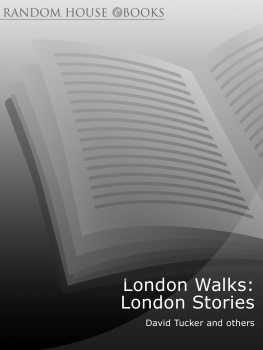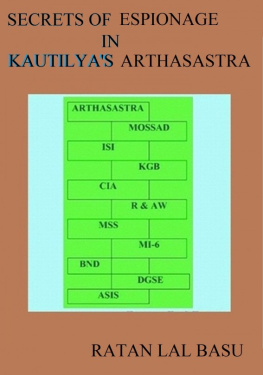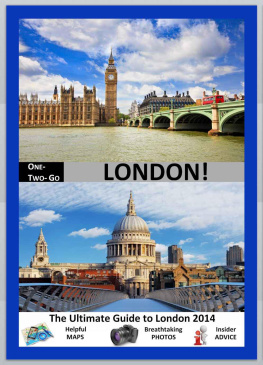by
NIGEL WEST
It is only by visiting the locations of so many famous episodes in Britains colourful espionage history that the aficionado can really flavour the full drama of the events that shaped postwar Europe. Most of the sites remain just as they were. The imposing faade of 21 Queen Annes Gate, for more than four decades the headquarters of the Secret Intelligence Service, is exactly as it was before the war when its chief, Sir Hugh Sinclair, struggled to persuade Prime Minister Chamberlain that the strength of Hitlers Luftwaffe had been underestimated and that it presented a serious strategic threat. Only those indoctrinated into SISs secrets were allowed to know that the rear of the elegant town house was connected to a large anonymous office block in Broadway where the cream of the nations debutantes acted as secretaries to the academics and other wartime volunteers who managed SISs operations across the globe.
These were not the inconsequential pinpricks that marked so many futile clandestine operations, but rather the episodes that changed the course of the world. Imagine the tension as a group of senior intelligence professionals huddled around the teleprinter in Broadway Buildings awaiting news of the battleship Deutschland immediately after the Munich crisis in 1938. After its goodwill visit to Vigo the warship was supposed to continue its voyage into the Atlantic and make further courtesy calls to foreign ports. But SIS had calculated that if Hitler intended to renege on his agreement with Chamberlain it was likely to return home to Germany to prepare for war. Suddenly the machine chattered a report from the wireless direction-finding equipment which monitored the ships every radio transmission. From the interception of its signals, the traffic analysts had determined that the Deutschland had taken a southerly course; peace had been assured, at least temporarily. And throughout, the public at large gained no clue to the drama, or had any reason to suppose Europe had been on the brink of war. Only in recent years have the wars murkiest secrets emerged, and the locations of these events been revealed.
Are there still traces of the corpses of French traitors that were rumoured to have been buried in the basement of 10 Duke Street by General de Gaulles ruthless henchmen? Do the ghosts of betrayed SOE agents haunt the safe-houses and flats in the Baker Street area where so many ill-fated missions were planned?
Looking up at the window of the office on the corner of South Audley Street which Sir Roger Hollis inhabited for nine years, the view quite unchanged from the long dark days of the MI5 molehunts when Peter Wright accused his director-general of treachery, one can imagine the scene. At the height of the Cold War, with the Security Service wracked by the fear of hostile penetration, Hollis is confronted by his aide. Exasperated by Wrights paranoia, he gazes out across the street and turns to deny the charges against him. In not dissimilar circumstances, in his flat in the Courtauld Institute, overlooking Portman Square, Anthony Blunt had poured himself a stiff gin and tonic and, taking a deep breath, had confessed to his interrogator that he had indeed been a KGB spy for more than 25 years.
Some of the premises described in this remarkable book are still in use, and the eager but unsuspecting spy-spotter may unwittingly witness occasions of great moment. Was there an innocent spectator present outside George Blakes old office at 3 Carlton Gardens when a chauffeur-driven limousine swung up to the front door in 1989 and deposited Paul Henderson and his case-officer? Henderson was a director of Matrix Churchill, and SISs most trusted source inside the Iraqi arms industry, attending one of a series of debriefings routinely conducted upon his return from Baghdad. Had Saddam Hussein acquired the necessary technology for the successful construction of a nuclear weapon? What progress had been achieved in building the supergun? One can only guess at the conversation that must have passed between the two men as they stepped out of the car and into the colonnaded building which, to this day, has no exterior sign of its secret purpose and is listed simply as a branch of the Foreign and Commonwealth Office.
Tracing these buildings where history was made, and in some examples continues to be made, has required assiduous research and plenty of patient legwork. This book is the fruit of a painstaking project that has taken the author from one end of London to the other, and across the more than one hundred years between the start of a modern British intelligence capability and our own day. Each site is accompanied by accurate and often humorous pen-portraits of the practitioners of the arcane arts who inhabited each carefully documented site. As one turns the page or crosses the road one encounters another authentic episode of the astonishing events that shaped the unavowed conflicts that continued beyond 1945 and into the decades of nuclear and political stalemate.
These are the authentic locations for many of Britains most notorious cases of espionage, the scenes of arrests, betrayals and raids; of surreptitious break-ins, suicides and mysterious disappearances, sophisticated eavesdropping schemes and deniable surveillance operations. The era of superpower confrontation and the search for Nazi parachutists is long gone, but as you stand outside the Cabinet War Rooms in Great George Street you can almost hear Churchills voice booming from deep below; you can almost spot the MI5 Watcher teams scurrying from their observation posts and camera positions as their quarry emerges from Kensington Palace Gardens. Is he a trusted agent whose loyalty is under test, or the source of a leakage of classified information, or perhaps a professional intelligence officer masquerading as a diplomat? As you follow the recommended routes, keep your eyes peeled, for London remains the espionage capital of the world.
Nigel West
London is my favourite city, and if this book is in your hands perhaps you share my view and my reasons. My own fondness for London comes from two special circumstances in addition to the more usual ones. First, I have every historians attachment to London, shaped further by the toughest course I took at college: in British constitutional history. Second, my special interest in the history of intelligence and unconventional warfare has made me keenly aware of Londons rich presence in this narrow area of historical enquiry. Other places (Paris, Vienna, virtually any city in Switzerland) have certainly seen their share of spookery, but I am unswerving in my loyalty to London as pre-eminent in these matters. It will be my pleasure to urge you to a similar conclusion.
This project began on a whim. Before the recent explosion of books on intelligence and unconventional warfare, I had read most of the available accounts about SOE and had noted with interest their disclosure of a number of once-secret locations. On a subsequent trip to London I went to Baker Street with a list of these locations in hand. To my delight, I found that all buildings on my list had survived the best efforts of both the



